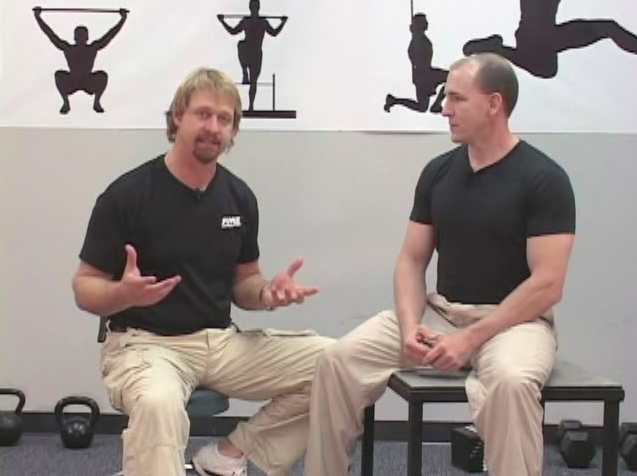Manage Your Minimums
Posted by Gray Cook

A decade is a good stretch of time. Many things progress and change in a decade, for example, most of us have had three or four new smartphones in that time and the current model has features not thought possible 10 years ago. And some things stay the same, like your favorite t-shirt or am I the only one with well broken in t-shirts from 10 years ago? Anyway…
A bit over a decade ago, FMS released a four DVD Secrets of… series. Secrets of the Shoulder, Secrets of Core Training – The Backside, Secrets of the Hip and Knee, and finally Secrets of Primitive Patterns. These DVDs are now available to stream for free for FMS members. As we release these videos for viewing and use by and for the FMS community, I wanted to do a bit of “retrospective” on them with a decade of perspective.
These videos set the foundation for what became the FMS Level 2 (now known as Return to Movement) and the Corrective Exercise progressions. The principles and concepts laid out in the videos are still solid. We have some different drills and techniques that we use but a lot of it still stands even after a decade.
We would focus on hands off strategies and techniques. Gray was speaking to both the SFMA and FMS communities so some of the information is meant for clinical hands on work and is not for the fitness professional. Some soft tissue techniques and drills were shown in a very hand-on manner. For example, when you see Gray stand above me and “stabilize” me for the rib grab t-spine rotation during Secrets of the Shoulder, you are looking at a clinician dialing in a technique with hands on guidance to ensure a good application of that drill. BUT this is not how a fitness professional uses this drill. A fitness professional is to remain hands off using excellent set-up, cueing and at most some tactile cueing. If you see one of the drills being done with lots of hands on work know that that is for clinical application and if the fitness professional watching cannot figure out how to achieve the same result without the hands-on approach then they should not use it. Period.
If you want to be up to date on how we have moved all of the drills and techniques to be hands off then attend Return to Movement.
We would simplify the additional screening and “breakouts” that were shown. Again, we were speaking to both the SFMA and FMS communities and some of what was shown was more of a clinical approach. For the FMS community, the screen and the corrective strategy will guide you through the process not the "breakouts"
The progression to Performance and load through the process of mobility, static motor control to dynamic motor control to performance. This is still the process for working through a corrective strategy. Make sure the mobility is adequate to the pattern. If you open up mobility give the person the ability to control it through static and dynamic motor control drills. And finally, we want to get to load and performance so we progress out of corrective work to develop the physical capacities needed to accomplish the individual’s goals.
In Secrets of the Shoulder we end up at overhead pressing and pull-ups. In Secrets of the Hip and Knee squatting, kettlebell cleans from a split stance are shown. Barbell deadlifts and swings round out Secrets of Core Training. Strength and performance have always been where we want to end up in a corrective strategy.
"Strength is always functional."
— FMS (@FunctionalMvmt) June 15, 2017
Throwback to Gray and Brett in our 'Secrets of Core Training' pic.twitter.com/6u0TJjrw7k
Despite misapprehension, the deadlift is one of the most effective ways to train the core.
— FMS (@FunctionalMvmt) June 29, 2017
🎥 via "Secrets" DVD: https://t.co/WatZEYNaJZ pic.twitter.com/nuaRRoqbDC
The principles and concepts would not change or would not change much. Looking at the neck and t-spine are still the entry point for addressing a shoulder mobility issue. Ensuring adequate mobility for the pattern is still a focus – even if we need a “stability/motor control” drill to get it.
Conclusion
As Morpheus said in the Matrix – “some things change and some things do not”. The Secrets series has stood up well to a decade of innovation and progression in the exercise world. While some aspects of the message would be adjusted to more appropriately target the professionals that need that message, the principles, concepts and progressions are still relevant.
Let us know if what you find in the “Secrets…”
Posted by Gray Cook
Posted by Marc Perry